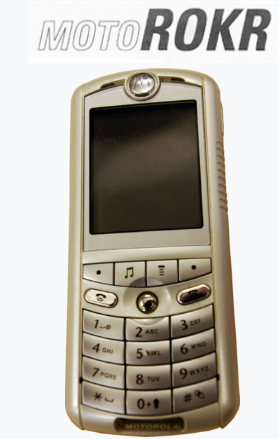Motorola ROKR E1 - Music Phone Baseline for Future Innovation
The First iTunes Phone - A Missed Opportunity in Hindsight - 2005
Working at Motorola’s Design Center in Singapore (Ang Mo Kio), I had the opportunity to contribute to the Motorola ROKR E1, Motorola’s first phone with iTunes integration. This was a significant moment in mobile history—though we didn’t realize at the time how much it would define the path forward.

The Phone: A Vision of Music Integration
The ROKR E1, launched in 2005, was positioned as the answer to bringing iTunes to mobile phones:
- First phone to integrate iTunes Store
- SLVR design form factor (similar to RAZR but thicker)
- Support for AAC and MP3 audio
- 2-megapixel camera
- FireWire connectivity for music transfer
- 1GB storage for music library
- Partnership with Apple marking a major trend
Historical Context
In retrospect, the ROKR E1 was a baseline—a working example of how a music phone could work. Within a couple of years, the iPhone would completely revolutionize this category, but the ROKR represented the state-of-the-art thinking in 2005 about integrating music and telephony.
My Role - Testing, QA, Factory & Embedded Systems
Working on the ROKR E1 involved unique challenges around music functionality:
Quality Assurance (QA)
- Testing iTunes Store integration and music purchase workflow
- Audio quality validation across different codecs and bitrates
- Battery life testing with intensive music playback
- Stress testing the storage subsystem with large music libraries
- FireWire connectivity reliability testing
- UI responsiveness when managing large music collections
Factory Integration
- Coordinating with manufacturing on storage reliability
- Testing production firmware builds with iTunes pre-installed
- Validating quality metrics for music playback consistency
- Working with quality gates specific to music functionality
Embedded Systems
- Testing the custom Linux firmware with iTunes integration
- Audio codec performance optimization
- Storage management and database performance
- USB/FireWire driver stability
- Memory optimization for running music player alongside phone OS
- Power management for sustained music playback
The Lesson: Innovation in Context
The ROKR E1 was technically competent and represented genuine innovation—bringing commercial music service to a mobile phone was non-trivial. Yet within just a few years, a different approach would dominate the market.
My work on the ROKR taught me that in fast-moving industries like mobile phones, execution matters, but the broader ecosystem and user experience paradigm matter even more. The ROKR was a preview of a future that would arrive from an unexpected direction.
Looking back, the ROKR E1 represents a fascinating inflection point in mobile history—proof that Motorola was thinking about the right problems, even if the ultimate solutions would come from elsewhere.